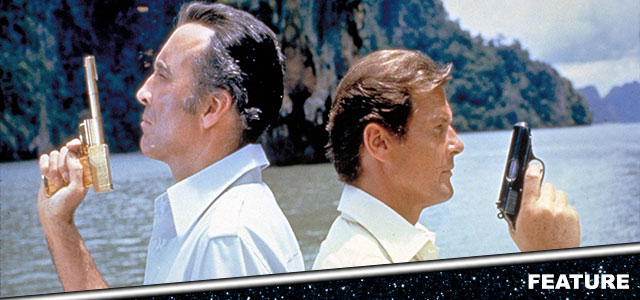
The 25th James Bond movie No Time To Die arrives in Cineworld in September, and we're counting down the days by revisiting all the 007 movies in chronological order of release.
In honour of Daniel Craig's swan-song as 007, we're taking a nostalgic trip back through time. This week: Roger Moore stars in The Man with the Golden Gun...
What is the story of The Man with the Golden Gun?
A valuable piece of solar technology known as the solex has been stolen, and British MI6 agent James Bond/'007' (Roger Moore) is dispatched to Hong Kong to help retrieve it. At the same time, however, Bond discovers he has been marked for death by legendary assassin Francisco Scaramanga (Christopher Lee), the infamous 'man with the golden gun'.
007 is alerted when he's sent a golden bullet engraved with his signature number. This alludes to the fact that Scaramanga eliminates all of his targets using just one bullet fired from his makeshift golden pistol. On arrival in Asia, Bond makes contact with fellow agent Goodnight (Britt Ekland) and Scaramanga's mistress Andrea Anders (Maud Adams), not to mention his diminutive henchman Nick Nack (Herve Villechaize).
As the battle for the solex continues, Bond is drawn into a battle of wills with an enemy who is very much his intellectual and physical equal...
How did The Man with the Golden Gun get made?
Roger Moore first asserted himself as Ian Fleming's creation James Bond in 1973's Live and Let Die. Moore achieved what many thought impossible: put a brand new twist on the character that was distinct from predecessor Sean Connery, a depiction that also proved lucrative at the box office. Connery had been so synonymous with the role that, prior to Live and Let Die's release, many doubted if the Bond franchise would survive – a situation not helped by the unsuccessful attempt to hand the baton to George Lazenby with On Her Majesty's Secret Service.
Moore's eyebrow-raising, quip-tastic portrayal of 007, very different from the rugged, masculine Connery, augured a new Bond for a new era, one that was self-consciously comedic and absolutely not to be taken seriously. Live and Let Die emerged at a time of great turbulence for Bond, not just because of Lazenby's departure after one film, but also because the world was rapidly changing around the franchise. For the first time, the Bond franchise was in thrall to popular trends, whereas in the 1960s, Bond movies had set many of those trends themselves – hence Live and Let Die assimilated many of the tropes of 'Blaxploitation' cinema so popular in the early-to-mid 1970s.
The struggle to keep Bond relevant was especially pronounced in The Man With the Golden Gun, Moore's second Bond movie. Just one year after the release of Live and Let Die, kung-fu cinema had asserted itself as the exciting new kid on the block, largely thanks to the heroic if tragically short-lived efforts of master Bruce Lee, whose 1973 movie Enter the Dragon still stands as a classic of the genre. It was therefore inevitable, and not a little dispiriting, to see the Bond franchise jump on the bandwagon, in a movie that rather cynically packages up locations, characters, situations and action sequences from Hong Kong cinema, albeit with 007 stuck rather awkwardly at the centre.
There were also serious problems behind the scenes, which were to determine the future of the series. Longstanding producers Albert R. 'Cubby' Broccoli and Harry Saltzman, effectively the godfathers of Bond, were to go their separate ways following the film's release. The working relationship between the two had become increasingly fractious, a seismic revelation given their partnership stretched back to 1962's Dr No, which got off the ground after the producers formed a partnership with United Artists. In the process, they created two additional companies to get the project going: Danjaq, which was to hold the rights to the films, and Eon Productions, which was to produce them.
Following the release of Golden Gun, Saltzman sold 50% of his stake in Danjaq, Eon's parent company, and parted ways from Broccoli, leaving him to go it alone on the next movie, The Spy Who Loved Me. (That film's release took three years owing to the legal wranglings.) It was perhaps the first sign that the Bond franchise wasn't invulnerable, and would require regular upheavals throughout the decades to sustain relevance. This entailed responses to both the political climate (the collapse of the Cold War, acknowledged in 1995's Goldeneye) and an ever-shifting pop culture landscape (the increasingly aggressive blockbuster landscape of the 1980s and 1990s, which influenced the tone of Timothy Dalton's two movies).
Another key theme in the movie is energy: the movie revolves around a classic Bond MacGuffin, the Solex, which diabolical villain Scaramanga uses to power a laser weapon on his remote island hideaway. This was intended as a reflection of the energy crisis blighting Britain in 1973, just as Golden Gun went into pre-production. Responsibility for the script fell to Richard Maibaum who had given way in the preceding two movies to American scriber Tom Mankiewicz. The latter, however, sat this one out, citing tensions with returning director Guy Hamilton, who had directed Bond movies Goldfinger, Diamonds are Forever and Live and Let Die.
It was originally intended that Golden Gun would follow On Her Majesty's Secret Service; however, political tensions in the proposed shooting location Cambodia led to the project being delayed. Fleming's novel The Man with the Golden Gun is set in Jamaica; the filmmakers, however, wanted to capitalise on the explosion of interest in the Far East, and opted to take Bond to that corner of the globe for the first time since 1967's You Only Live Twice. Thailand was eventually selected, largely owing to Saltzman's desire to travel to that area, and also for the fact that other proposed locations Iran and Beirut had proved impractical.
Golden Gun's farcical, often borderline racist, treatment of its various locations and characters (including two school girls who assist Bon in defeating a dojo-full of bad guys), means its reputation has weathered poorly. Then there's the treatment of the two central women characters: Britt Ekland's Goodnight is a bumbling goof, surely one of the worst-written of Bond's allies. And Maud Adams' dignity as the conflicted Andrea Anders is brought down during a misguided scene where Bond beats her up for information. In fact, every character in the movie besides Scaramanga appears to be having a miserable time: Bond and Goodnight appear to hate each other; and the interplay between M (Bernard Lee) and Q (Desmond Llewelyn) is harshly antagonistic without proper explanation. Maybe behind the scenes tensions spilled over onto the set – either way, it doesn't make the movie any more palatable.
If Golden Gun is one of the weaker Bond movies, then oddly enough it showcases one of the finest villains. Christopher Lee is clearly singing from a different hymn sheet to the rest of the cast, fashioning a fully-rounded character who is by turns charming and deeply sadistic. Lee was a step-cousin of Bond author Fleming and had been considered for the title role in Dr No; his suave urbanity, combined with the latent menace familiar from his Hammer Horror films and The Wicker Man, helps construct a fearsome Bond antagonist.
It all comes to a head in the atypically well-written dinner table scene on Scaramanga's private island. (The beautiful island of Phuket, where the movie was filmed, immediately became a major tourist destination.) This is where 007's philosophy of executing for Queen and country becomes challenged: why is execution on behalf of a nation any less reprehensible than a free agent who does so for money? Watching Lee lock horns with Moore is one of the film's few pleasures, which makes it all-the-more disappointing that the final showdown, set in Scaramanga's funhouse, should fire blanks.
Another aspect of Golden Gun that hasn't dated particularly well is the casting of actor Herve Villechaize as Nick Nack. Villechaize (portrayed on TV by Game of Thrones' Peter Dinklage) would eventually become famous for his role in TV series Fantasy Island, but his potential as a memorable henchman is constantly undercut by the need to make him the butt of the jokes. This comes to a head in the laughable finale where Bond locks him in a suitcase before promptly returning to seduce Goodnight – it was quite clear the Bond series had jumped the shark.
Talking of jumps, Golden Gun features one of the most famous car stunts in movie history – although, like everything else in the movie, it's undercut by one fundamentally silly decision. It occurs when 007, in pursuit of Scaramanga and Nick-Nack along with returning Live and Let Die character J.W. Pepper (Clifton James), notices a ramp leading over a river. Bond being who he is, he naturally launches the vehicle across in a corkscrew spiral, a remarkable stunt that stands as a pre-CGI era highlight.
Stunt driver 'Bumps' Willard accomplished the feat in one take, after extensive testing of the set-piece had taken place at Cornelle Aeronautical Laboratory in New York. However, the achievement is badly undercut by the inclusion of a slide-whistle over the footage (presented in slow-motion to draw out the length of the stunt). This came courtesy of composer John Barry, who later rued the decision (although it was producer Broccoli who ultimately decided to keep it in).
Like everything else in Golden Gun, it points to a franchise stuck at a crossroads between self-aware silliness and dramatic excitement – something the franchise would (temporarily) escape from in the vastly superior The Spy Who Loved Me.
READ MORE
- No Time To Die and the 6 James Bond movies we never got to see
- 7 actors who could play James Bond after Daniel Craig retires
- Shaken and stirred! Daniel Craig's defining 007 moments
What music is on the soundtrack for The Man with the Golden Gun?
Somewhat unusually for a Bond movie, the soundtrack for The Man with the Golden Gun fails to hit the heights. This was John Barry's return to the franchise he had helped define - he sat out 1973's Live and Let Die in favour of Beatles producer George Martin, and it was expected that his music would invigorate the production.
Classy and well-composed though the score undoubtedly is, it's far weaker than Barry's earlier Bond offerings. A large part of that is down to the opening credits song, an awkwardly jumbled warble from Lulu that doesn't give Barry much to draw on in terms of the underscore melody. The song was meant to have been performed by rocker Alice Cooper, but it ultimately wasn't used, so the singer later featured it on his album Muscle of Love.
Lulu's effort is patently ridiculous, even by Bond standards, intoning (courtesy of lyricist Don Black) about Scaramanga's "powerful weapon" and "if you want to get rid of someone, the man with the golden gun will get it done". Whereas all of the Bond songs had walked that tightrope between campiness and dramatic intuition, this one trips too far into the realm of self-parody.
There had long been a symbiotic relationship between the opening Bond title song and Barry's accompanying score. In this instance, it was clear the composer lacked inspiration, sometimes awkwardly jamming a few bars of the piece into an action sequence without developing it coherently.
In-keeping with the movie, the music is often wildly cartoonish and varies haphazardly in tone, ranging from the honky-tonk piano of Scaramanga's funhouse to the brooding bamboo flutes and chimes that represent the paranoid environment of Thailand's criminal underworld.
That said, Barry is such a formidable composer that he's able to conjure pieces of genuine beauty. The gorgeous translation of the title song in 'Goodnight, Goodnight', ebbing and flowing on sensual strings and bass flutes, is a marvellous example of how Barry went above and beyond the needs of the film, fashioning a swooning romantic atmosphere.
How was The Man with the Golden Gun received?
The Man with the Golden Gun received largely negative reviews at the time of its release, and its reputation hasn't exactly improved in the modern era. Critics of the film cite its cartoonish qualities and underlying air of misogyny, not to mention reliance on stereotypes and general lack of inspiration as far as the plot is concerned.
That said, Lee's portrayal of Scaramanga was the one aspect of the movie that met with unanimous acclaim. To this day, he's held up as one of the best Bond villains of all time, the perfect match for 007, albeit operating on a different register.
Nevertheless, with the unexpected departure of Harry Saltzman, it was clear the Bond movies were entering a brand new era...
What was the next movie in the James Bond series?
The Spy Who Loved Me was the next Bond movie, released in 1977.
When is No Time To Die released in the UK?
No Time To Die is released on 30th September. Don't forget to tweet us your favourite James Bond movies @Cineworld.

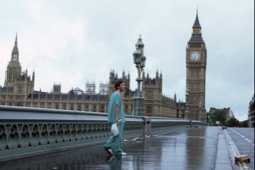

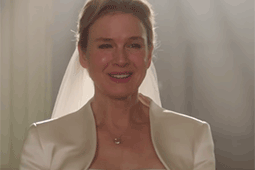
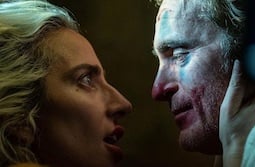

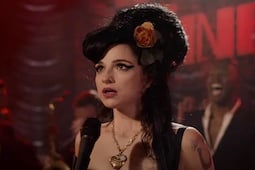
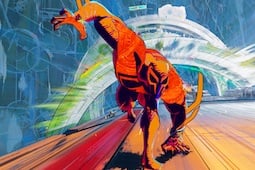
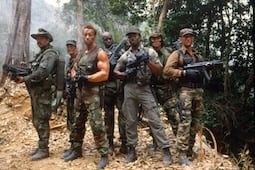

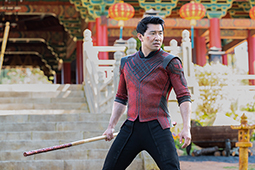
.jpg)
.jpg)

.jpg)
.png)



